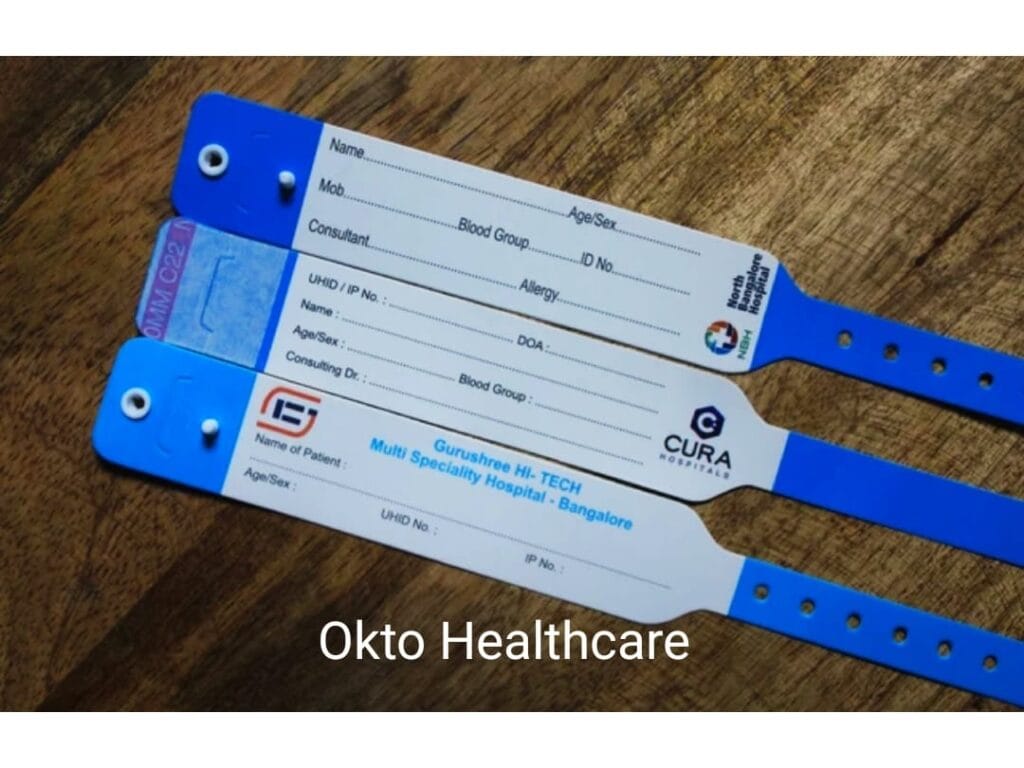Streamlining Patient Treatment With Effective Recognition Bands
The application of reliable recognition bands is a crucial aspect in boosting patient treatment within medical care settings. These bands not only serve to reduce the dangers connected with client misidentification but additionally improve interaction among medical personnel, therefore cultivating a more secure atmosphere. Numerous types of identification bands accommodate certain requirements, from sturdy wristbands for adults to specialized bands for infants and vital instances. As the landscape of person recognition evolves, one must consider the effects of these systems on total medical care delivery and patient outcomes. What technologies await in this essential location?
Importance of Patient Recognition
Ensuring accurate individual recognition is crucial in healthcare settings, as it directly affects the security and high quality of treatment provided. Misidentification can bring about significant errors, consisting of providing the wrong drug, executing wrong treatments, or miscommunicating essential individual information. Such errors not only jeopardize client security but can also result in legal ramifications and decreased rely on health care systems.
Effective person identification is basic to developing a protected environment where clients obtain individualized and suitable treatment. It promotes the precise paperwork of case histories, allergies, and treatment plans, making certain that doctor have accessibility to essential details in any way times. Durable identification methods help improve interaction amongst clinical personnel, improving cooperation and reducing the threat of errors.

Kinds Of Recognition Bands
Recognition bands play a vital role in maintaining accurate client records and improving security within medical care settings. Different kinds of identification bands are made use of to accommodate the specific requirements and needs of various patient populaces.

An additional kind is the ankle joint band, which is particularly valuable for infants and infants, guaranteeing that recognition remains undamaged also during treatment treatments. Specialized bands, such as those for allergic reaction signals or fall danger indicators, give added layers of security by drawing instant attention to critical person problems.
Lately, electronic recognition bands have obtained popularity, incorporating barcodes or RFID technology that can be checked to promptly obtain patient information. These bands streamline workflows and decrease the risk of human mistake during individual recognition processes.
Benefits of Reliable Recognition
Efficient recognition of people via the usage of identification bands contributes considerably to overall client safety and security and care top quality. By making sure that each person is precisely identified, doctor can efficiently match clinical treatments and procedures to the proper person, reducing the danger of mistakes. This is particularly crucial in settings with high individual turnover, where the capacity for misidentification is greater.
Additionally, efficient recognition bands boost communication among healthcare teams. Accurate and clear patient identification promotes collaboration and makes sure that all team participants know a person's details requirements and medical history. This communication is important for supplying coordinated treatment, particularly in emergency situation scenarios where time is important.

Eventually, reliable identification through making use of identification bands not only safeguards clients yet likewise advertises a culture of safety and security within healthcare centers (Patient Identification Band). By focusing on precise recognition, medical care companies Full Article can enhance results and improve the total patient experience
Carrying Out Recognition Equipments
While the significance of person recognition is well acknowledged, the application of durable recognition systems poses a complex challenge for medical care companies. Establishing efficient identification systems requires a thorough method, incorporating modern technology, employees training, and process combination.
First, organizations have to select ideal recognition modern technologies, such as barcode scanning, RFID, or biometric systems. Patient Identification Band. These technologies need to be examined based on expense, usability, and compatibility with existing infrastructure. A pilot program can aid identify potential concerns before major implementation
Next, comprehensive training other for personnel is important. All personnel have to understand the value of exact individual recognition and be efficient in using the picked modern technologies. Normal training updates and evaluations can reinforce finest practices and guarantee continued compliance.
In addition, healthcare companies should develop standardized procedures for client recognition across all divisions, lessening disparities and enhancing communication. Routine audits can assist identify spaces in adherence to these protocols.

Inevitably, an efficient implementation of recognition systems not only enhances person safety however additionally promotes a society of accountability and diligence within medical care settings, ensuring constant and trusted individual treatment.
Future Trends in Person Recognition
Innovations in innovation are readied to reinvent person recognition techniques in medical care setups. The integration of biometric identification methods, such as fingerprinting and facial recognition, is expected to boost precision and safety. These innovations can considerably lower the threat of misidentification, ensuring that clients receive the proper treatments and medicines.
Furthermore, the application of blockchain modern technology for individual records is getting grip. This decentralized method can offer a tamper-proof and safe method for managing client identifications, thereby enhancing access to crucial info throughout different doctor.
One more trend is the enhancing use mobile health and wellness applications that leverage QR codes for client identification. These applications permit real-time updates and easy accessibility to patient data, equipping medical care professionals to make educated choices quickly.
Additionally, artificial knowledge (AI) is positioned to play an essential function in analyzing person identification information, recognizing patterns, and anticipating possible identification mistakes prior to they happen.
As these modern technologies progress, they guarantee not just to enhance person safety and security however additionally to improve the general effectiveness of healthcare distribution systems. Embracing these technologies will be essential for future-proofing client care techniques.
Conclusion
To conclude, reliable identification bands are vital for enhancing individual safety and security and care quality within medical care settings. By reducing the threats associated with misidentification, these bands help with timely and accurate information retrieval, eventually improving communication among doctor. The execution of durable recognition systems not only promotes a society of security however additionally placements medical care establishments to adjust to future trends in person identification innovation, making sure ideal results for people in varied medical atmospheres.
As the landscape of client identification advances, one must think about the ramifications of these systems on general healthcare shipment and client end results.Effective client recognition is essential to establishing a safe and secure environment where clients get personalized and ideal care. Inevitably, prioritizing reliable individual identification methods not just cultivates a culture see page of security however likewise adds to improved person outcomes and overall fulfillment with health care services.
Efficient recognition of patients with the use of recognition bands adds considerably to total patient safety and care quality. The implementation of durable recognition systems not just fosters a culture of security but likewise settings health care institutions to adjust to future trends in patient recognition modern technology, making certain optimum end results for individuals in diverse clinical atmospheres.